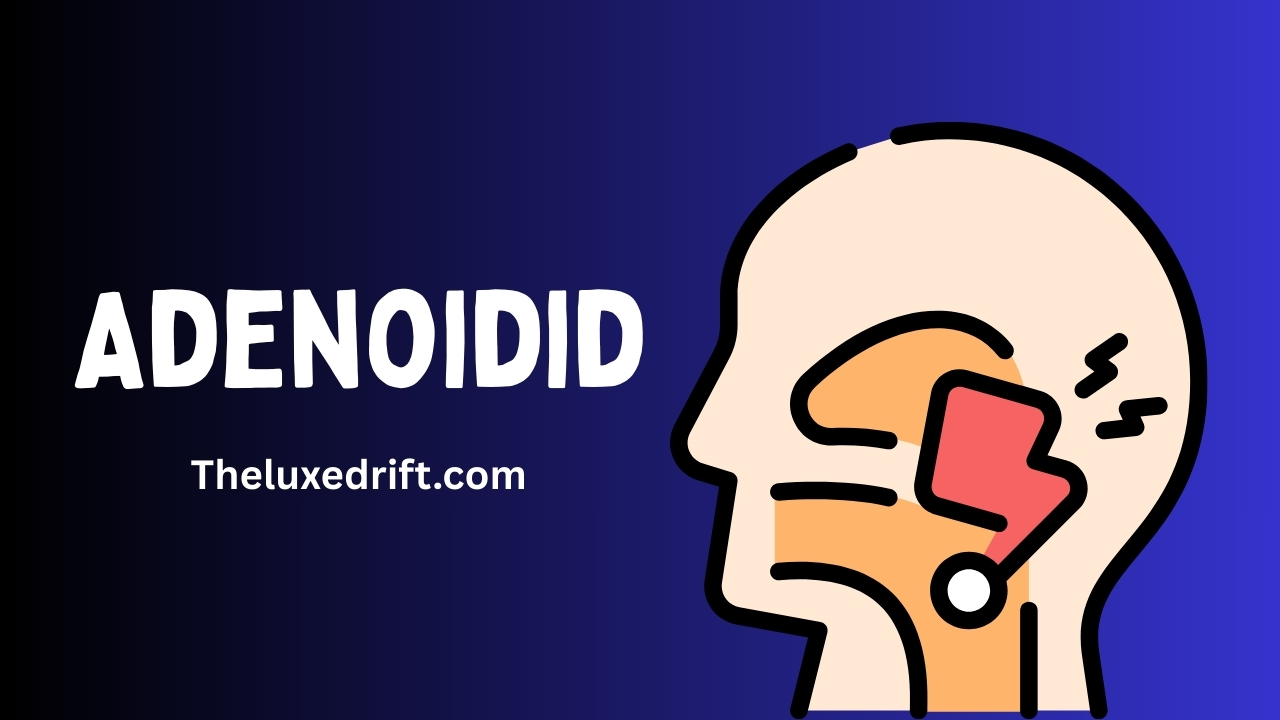Adenoids might not be a term everyone is familiar with, but they play a crucial role in our health. Nestled at the back of the nasal cavity, these small masses of lymphatic tissue help defend against infections, especially during childhood. However, sometimes adenoids can become problematic and lead to a condition known as Adenoidid. If you or your child have been experiencing persistent issues such as snoring or difficulty breathing through the nose, it could point to this common ailment.
Understanding what causes adenoiditis and recognizing its symptoms are essential steps toward effective treatment. With advancements in medical technology and treatment approaches, there’s hope for those suffering from this uncomfortable condition. Let’s dive deeper into everything you need to know about adenoidid—from causes and symptoms to both traditional and cutting-edge treatments that can make all the difference in managing this condition effectively.
What Causes Adenoidid?
Adenoidid is primarily caused by infections. Viruses and bacteria are the main culprits behind inflammation of the adenoids. Common colds, sinus infections, or even strep throat can trigger this condition.
Children are most susceptible due to their developing immune systems. When exposed to pathogens, their bodies react with swelling in the adenoid tissue as a defense mechanism.
Allergies also contribute significantly to adenoid issues. Allergens like pollen or dust mites can lead to chronic inflammation and discomfort.
In some cases, environmental factors play a role too. Pollution and secondhand smoke may exacerbate symptoms, making it essential for families to maintain clean living spaces.
Genetics might influence how prone someone is to frequent infections affecting the adenoids. A family history of respiratory problems could increase risk factors for developing adenoiditis over time.
Symptoms of Adenoiditis
Adenoidid often presents a range of symptoms that can be uncomfortable and disruptive. One common sign is nasal congestion, which can lead to difficulty breathing through the nose. This may result in snoring or even sleep disturbances.
Children with adenoiditis might also experience frequent ear infections or a persistent sore throat. The inflammation can block the Eustachian tubes, causing fluid buildup in the ears.
Coughing and bad breath are other indicators of this condition. A child may have a cough that lingers due to post-nasal drip from mucus accumulation.
Fever sometimes accompanies these symptoms, signaling an underlying infection. Observing these signs early on is crucial for timely intervention and management.
Traditional Treatment Methods
Traditional treatment methods for adenoiditis typically focus on relieving symptoms and managing infections. Many doctors recommend over-the-counter pain relievers to ease discomfort associated with swollen adenoids.
Antibiotics may be prescribed if a bacterial infection is suspected. This approach can help reduce inflammation and prevent further complications. Resting the body also plays a crucial role in recovery, allowing the immune system to respond effectively.
For children experiencing significant breathing difficulties or sleep disturbances, watchful waiting might be advised first. In some cases, surgery could become necessary if conservative treatments fail to provide relief after multiple occurrences of infection.
Nasal saline sprays are another common recommendation, helping clear mucus buildup and improving breathing ability. These traditional approaches aim at symptom management while addressing underlying causes of adenoid enlargement.
Cutting-Edge Treatments for Adenoidid
Advances in medical technology have transformed the way we approach adenoiditis. New treatment options focus on minimizing discomfort while enhancing recovery time.
One innovative method involves laser therapy, which targets and reduces swollen tissues without traditional surgery. This precise technique can lead to quicker healing and less post-operative pain.
Another exciting development is the use of biologic medications. These targeted therapies help manage chronic inflammation associated with adenoid issues, making them ideal for patients who experience recurrent infections.
Additionally, minimally invasive endoscopic techniques allow doctors to visualize the adenoids more clearly. This precision helps ensure that only problematic tissue is removed, preserving healthy structures nearby.
Advancements in immunotherapy are showing promise for those suffering from allergies linked to adenoid enlargement. By addressing underlying allergic reactions, these treatments may reduce instances of infection and inflammation over time.
Preparing for Treatment and Recovery
Preparing for treatment of adenoiditis involves several important steps to ensure a smooth experience. First, consult with your healthcare provider to discuss the best options available. Understanding the procedure and what it entails can help ease any anxiety you might have.
Next, make arrangements for post-treatment care. This is crucial as recovery may require some downtime. Having a supportive friend or family member nearby can be beneficial during this period.
Ensure that you follow pre-operative instructions carefully. This might include dietary restrictions or medication adjustments leading up to your treatment date.
Consider creating a comfortable recovery space at home. Stocking up on soft foods and hydration aids will make it easier once you’re back from the procedure.
Keep an open line of communication with your medical team throughout this process for any questions or concerns that may arise before and after treatment.
Long-Term Management of Adenoiditis
Managing adenoiditis effectively requires ongoing attention. Regular check-ups with a healthcare professional are crucial. These visits help monitor any changes in the size of the adenoids and assess overall health.
Maintaining good nasal hygiene can significantly reduce flare-ups. Saline nasal sprays or rinses can keep the airways clear and prevent infections. It’s also important to encourage healthy habits, such as a balanced diet rich in vitamins that support immune function.
In some cases, allergy management may be necessary. Identifying triggers through testing can guide treatment strategies, whether it involves medications or lifestyle adjustments.
Educating both parents and children about symptoms is vital for prompt action when issues arise. Early intervention often leads to better outcomes and prevents complications associated with chronic adenoid issues.
Prevention Tips
Adenoidid can often be managed through proactive measures. Keeping your living environment clean is essential. Regular dusting and vacuuming can reduce allergens that may contribute to inflammation.
Encouraging good hygiene practices, especially in children, is equally important. Teach them the value of washing hands frequently to minimize infections.
Maintaining a healthy diet rich in vitamins helps boost immune function. Foods high in vitamin C, such as oranges and strawberries, can support overall health.
Stay hydrated by encouraging water intake throughout the day. Proper hydration aids mucus clearance and keeps the throat moist.
Regular check-ups with a healthcare professional ensure early detection of potential issues related to adenoids or upper respiratory conditions. Staying informed about symptoms allows for timely interventions when necessary.
Conclusion
Adenoidid can significantly impact a person’s quality of life, especially in children. Understanding the causes and symptoms is crucial for timely intervention. Traditional treatment methods have served many well, but advancements in medical science now offer innovative solutions that promote faster recovery and less discomfort.
Preparing for treatment involves understanding your options and what to expect during the process. A solid support system can enhance recovery, allowing patients to heal more effectively. Long-term management strategies are essential for preventing future issues related to adenoidid. Remember, regular check-ups with healthcare professionals play an important role in monitoring health.
Incorporating preventive measures into daily routines can also make a difference. Simple practices like maintaining good hygiene and avoiding allergens may reduce the likelihood of developing adenoid-related problems.
Being informed about adenoiditis empowers you to make better decisions regarding your health or that of your child. Awareness leads to early detection and effective management, ensuring a healthier future.

